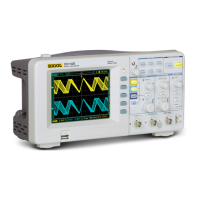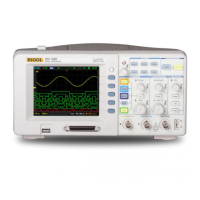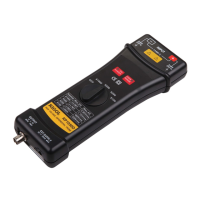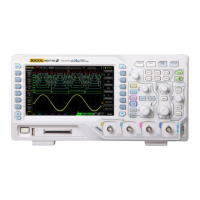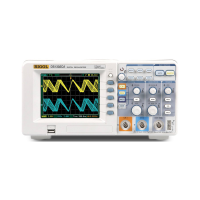Chapter 3 Performance Test RIGOL
DS1000B Sevice Guide
Zero Point Offset Test
Zero point offset is defined as the offset of the crossing point of the waveform and
trigger level line relative to the trigger position, as shown in the figure below.
Specification:
±0.5 div × Minimum Time Base Scale
[1]
Note
[1]
: For different models of oscilloscopes under test, the minimum time base scales are
different. For DS1204B, the minimum time base scale is 1 ns/div; for DS1104B, the minimum time
base scale is 2 ns/div; for DS1074B, the minimum time base scale is 5 ns/div.
Test Procedures:
1. Connect the active signal terminal of Fluke 9500B to CH1 of the oscilloscope, as
shown in Figure 3-8.
2. Turn on Fluke 9500B and set its impedance to 1 MΩ.
3. Output a fast edge signal with 150 ps rise time and 1.2 V amplitude via Fluke
9500B.
4. Configure the oscilloscope:
1) Press CH1 in the vertical control area (VERTICAL) at the front panel to turn
on CH1.
2) Press CH1 Probe to set the probe attenuation ratio to “1X”.
3) Rotate VERTICAL SCALE to set the vertical scale to 200 mV/div.
4) Rotate HORIZONTAL SCALE to set the horizontal time base to 1 ns
(the setting value is different for different model of oscilloscope under test;
please refer to
Table 3-2).
Table 3-2 Horizontal Time Base Setting Value for the Oscilloscope under Test
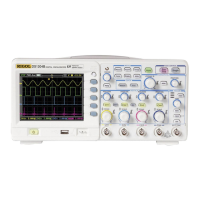
